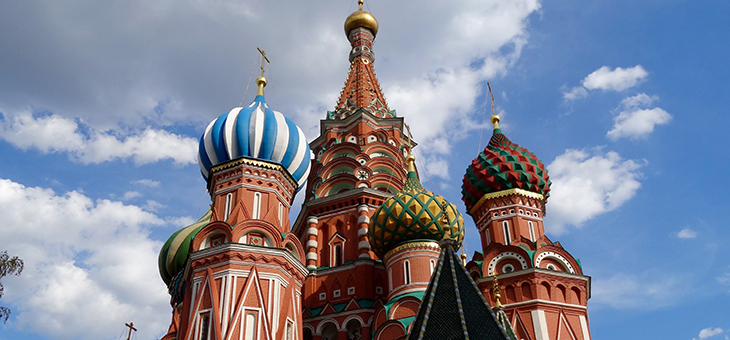“When the recipe was born, the head of the family was quite old and he didn’t have any teeth,” says Oksana Gaevskaya, with a smile that reveals she does not suffer from a similar issue. “So he asked his chef to make a meal very soft, for him to be able to chew it.”
Gazing at a grand salmon-pink palace in Saint Petersburg, my petite guide is recounting a possible origin of the classic Russian dish, beef Stroganov.

I am at the western end of Nevsky Prospect, the city’s vibrant main street, having joined Intrepid Travel’s new food adventure tour to sample the culture and cuisine of the world’s largest country.
Read more: Travel Horror Story: Bribing the Russian police
The 18th-century Baroque mansion ahead of us is the former residence of the wealthy Stroganov family, where the eponymous dish comprising small chunks of sautéed beef, sour cream and mushrooms was reputedly concocted.
Appetite whetted, I board the metro to the Petrogradsky suburb after being invited to taste an authentic Russian meal at the home of the Prokopenko family.

Cheerful matriarch Olga, surrounded by her five young children, ladles a starter of borscht (a beetroot-based soup) into glass bowls in the living room of her third-floor apartment, leaving me to add a dollop of sour cream and garnish with dill.
Smetana, the type of sour cream used, remains on the table for each course and, after devouring a plate of pork and plum stew, I smear the condiment on blini (pancakes) and enjoy it sprinkled with orange beads of salty salmon caviar for dessert.
Earlier in the day, I found time to forage for ingredients among the stalls of Sennoy market.

Traders from the troubled republic of Dagestan in north Caucasus supplied seemingly endless samples of pickled vegetables, while there was also an opportunity to try honey, horse meat, and chechil – a chewy string cheese which originated in Armenia.
Back in the city centre, 26-year-old Oksana, who grew up in warmer climes near the shores of the Black Sea, wraps a floral scarf around her dark brown hair to keep out a biting wind blowing in from the Baltic. She laughs about looking like a ‘babushka’ – an elderly lady or grandmother – as we continue through the historic heart of her adopted hometown.
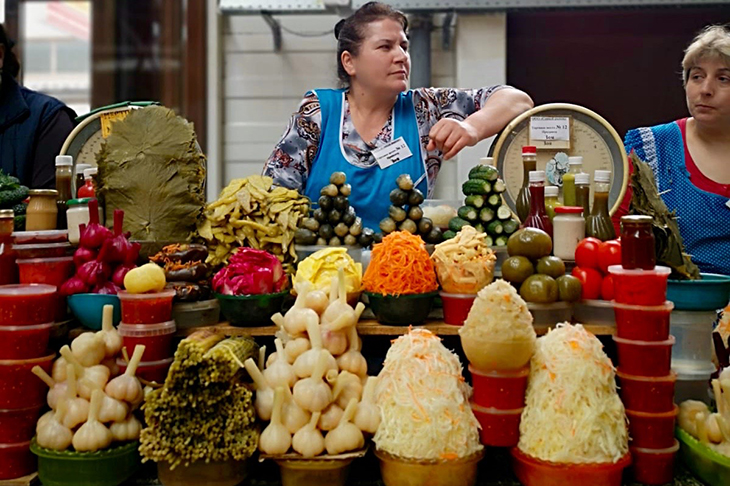
Rows of rainbow coloured Matryoshka dolls fill stalls that line the Griboyedov Canal in front of the Church of the Saviour on Spilled Blood.
The elaborate, polychromatic cathedral was commissioned by Russia’s penultimate Romanov tsar, Alexander III, to mark the site where his father, Alexander II, was assassinated in 1881.
“What I love about this city is that so much of our history happened here,” adds Oksana, as we meander through a series of secluded back streets and courtyards, before emerging in Palace Square.
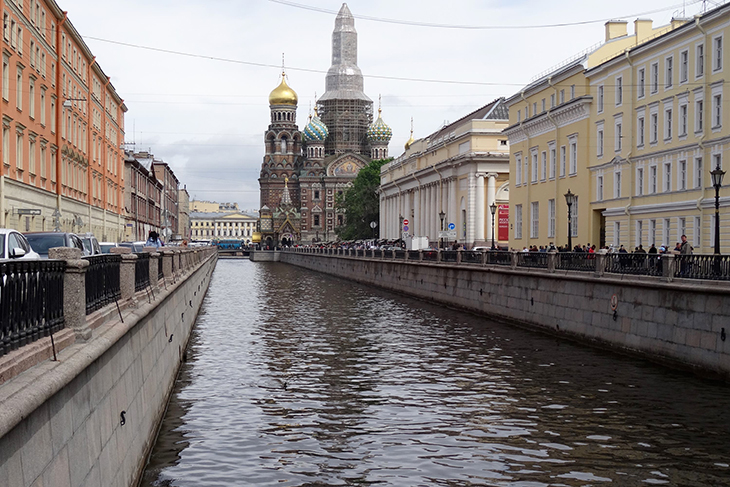
“You just feel all this – like Dostoevsky used to stay here, or Tolstoy, or Pushkin; a rebellion happened here, and so on and so on.”
A one-time home to each of those eminent writers, Saint Petersburg has plenty of tales to tell.
Briefly known as Petrograd and, later, Leningrad, the city was founded by Peter the Great in 1703. It was the capital of imperial Russia for more than 200 years, before the Bolshevik revolution of 1917 led to communist rule and the formation of the Soviet Union.
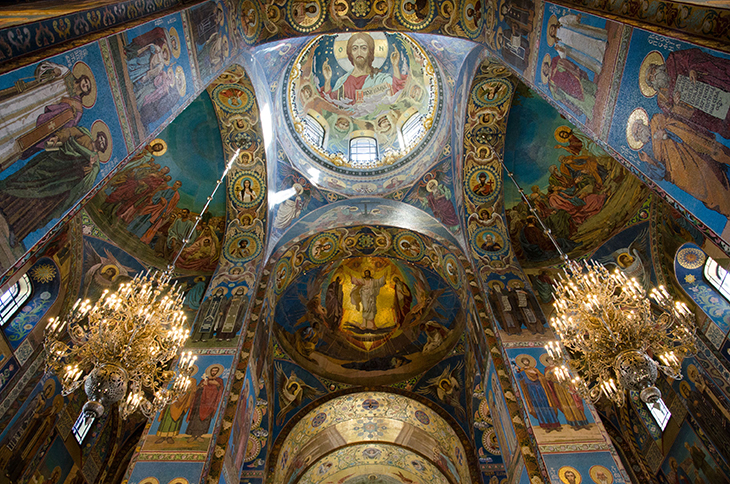
In front of me, the opulent green, white and gold of the vast Winter Palace is an enduring symbol of the Romanov dynasty, which ended with the abdication and subsequent execution of Nicholas II.
The former royal residence now forms part of the State Hermitage Museum, home to an enviable art collection started by Empress Catherine the Great.
Given ample history to digest, I am eager to discover how the nation’s food is being revolutionised.
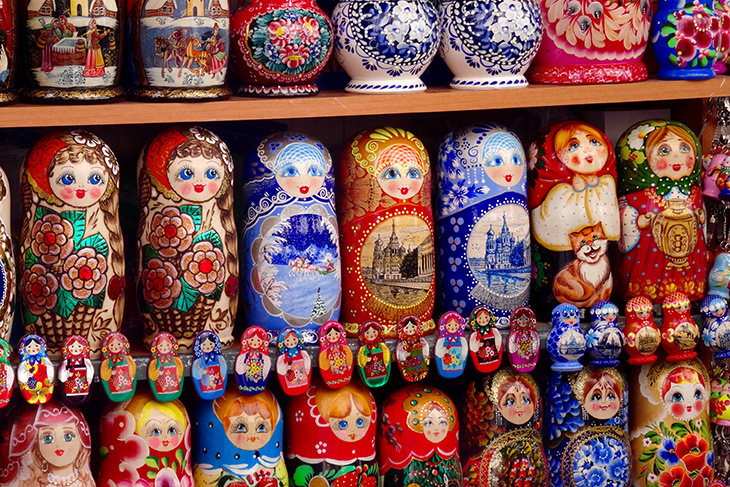
Contemporary restaurant Taste To Eat, situated on the southern bank of the Fontanka River, defines itself as honouring Russian gastronomy, albeit with a modern twist.
Dishes live up to the billing.
Standout combinations include pumpkin fritter with trout and caviar, stewed lamb with porridge and curry, and venison cutlet with sauerkraut and beetroot cottage cheese, served against a backdrop of exposed brickwork and low-hanging light fittings.
Read more: Food you must eat when visiting these nine countries
There is a temptation to linger in Russia’s stylish second city. But, eager to see how the current capital compares, I travel around 450 miles (725km) southeast to Moscow.
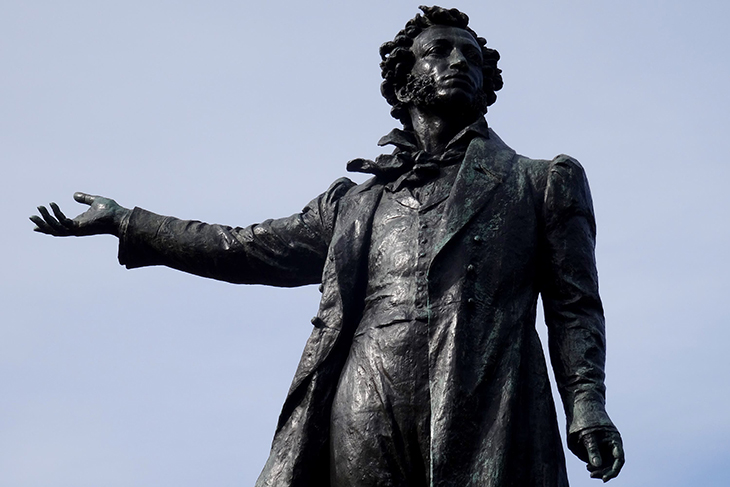
Despite notorious traffic congestion, this urban sprawl of over 12 million people feels far more welcoming than I had expected.
Joggers and cyclists overtake me along the embankment of Moskva River, as I stroll from the fountains of Gorky Park past the glistening golden domes of the Cathedral of Christ the Saviour to the terracotta-coloured bricks of the Kremlin. Around a mile northwest of Red Square and St Basil’s Cathedral, where I politely decline a photograph with impersonators of Lenin and Stalin, is Georgian restaurant Khachapuri.
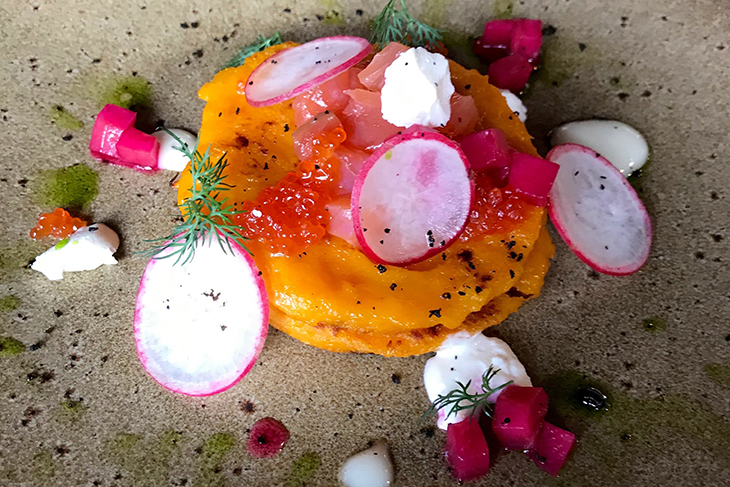
“In the last five years, I don’t have a single friend who hasn’t been to Georgia,” says Ksenia Martynova as we sit down to eat.
Ksenia, an insightful tour leader, partly attributes the increasing popularity of food from the former USSR member state to the depreciation of the rouble in the aftermath of Russia’s 2014 financial crisis.
“It almost became like a pilgrim trip,” she continues. “Because it is much cheaper than Russia and we still want to travel and experience something new.”
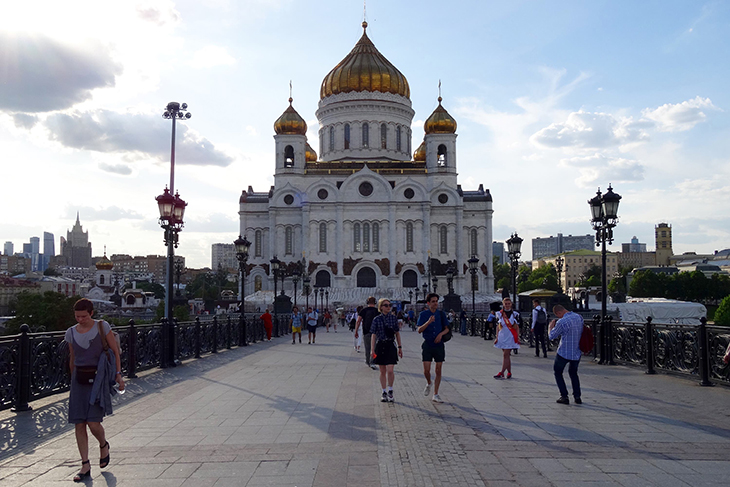
As plates are served, it is easy to understand the appeal.
Balls of minced beetroot and spinach (pkhali) and a meat platter of boiled tongue, baked veal and chicken with apricot tingle the taste buds, while walnut and garlic wrapped in aubergine, and khinkali dumplings packed with mushrooms, are particularly memorable.
Read more: Steamed Chicken Dumplings The restaurant takes its name from so-called ‘Georgian pizza’ – a cheese-filled bread, which we order with egg, and share by tearing from the edges and dipping in the middle.
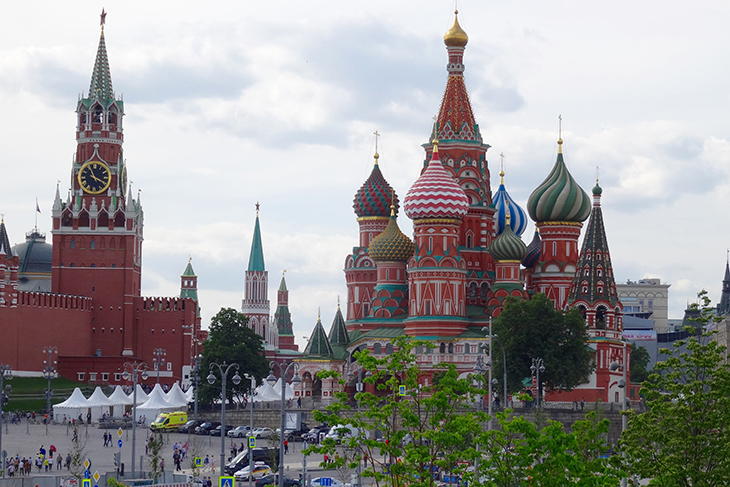
My final evening in Moscow culminates across the street from the imposing former headquarters of the KGB.
Kalashnikov door handles lead underground to the bunker-esque spy bar, which is packed with military memorabilia and the last stop on a vodka-tasting tour.
An arsenal of lethal weaponry is mounted on the walls, yet I find pungent shots of garlic-infused alcohol do more damage.
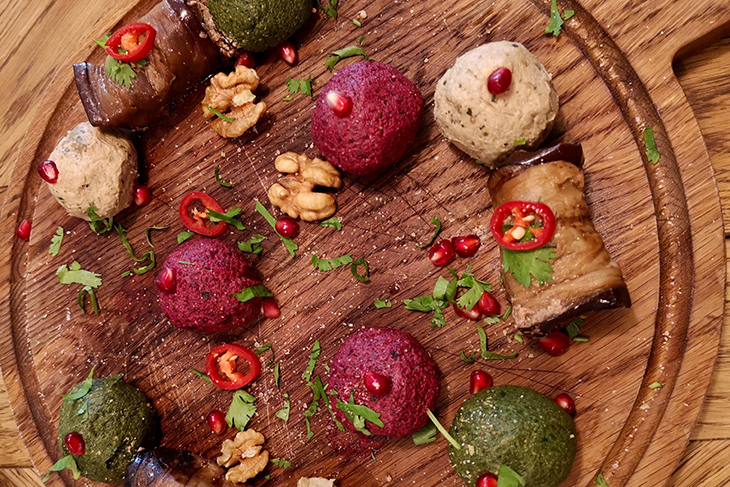
Eating a breakfast of creamy buckwheat porridge early the next morning, with a slightly sore head and plane to catch, it dawns on me that my trip has ended without sampling a plate of Stroganov.
The missed opportunity, however, is not too difficult to swallow.
Russia provides plenty to get your teeth into.
Have you visited Russia? What food from this list would you most like to try? Do you have a meal that you’ll always remember from your travels?
– With PA
If you enjoy our content, don’t keep it to yourself. Share our free eNews with your friends and encourage them to sign up.

